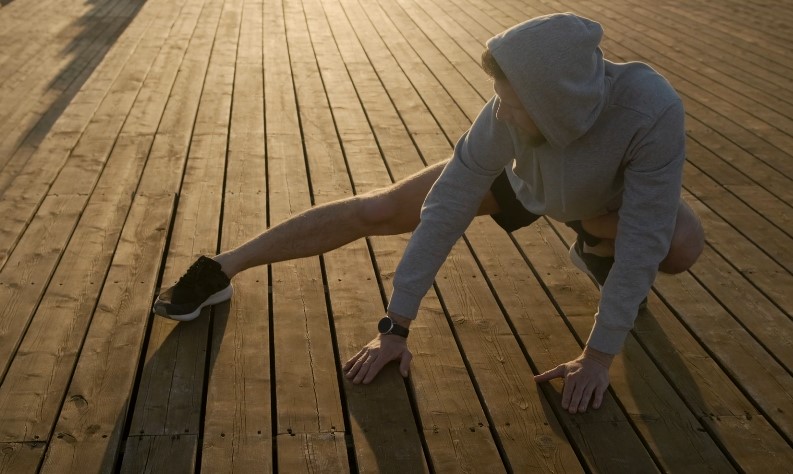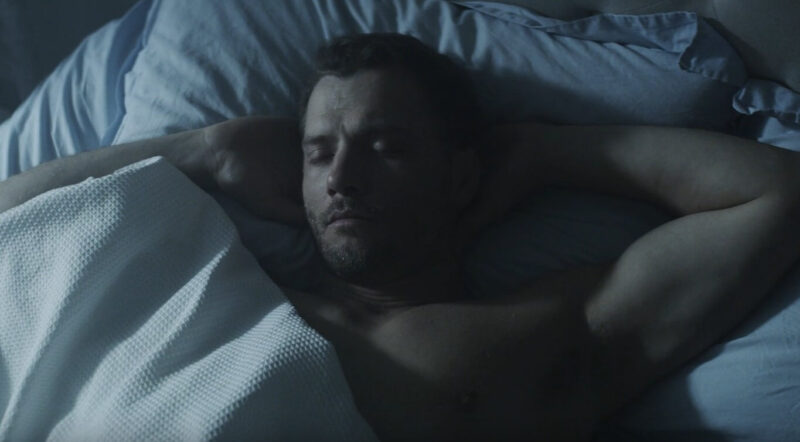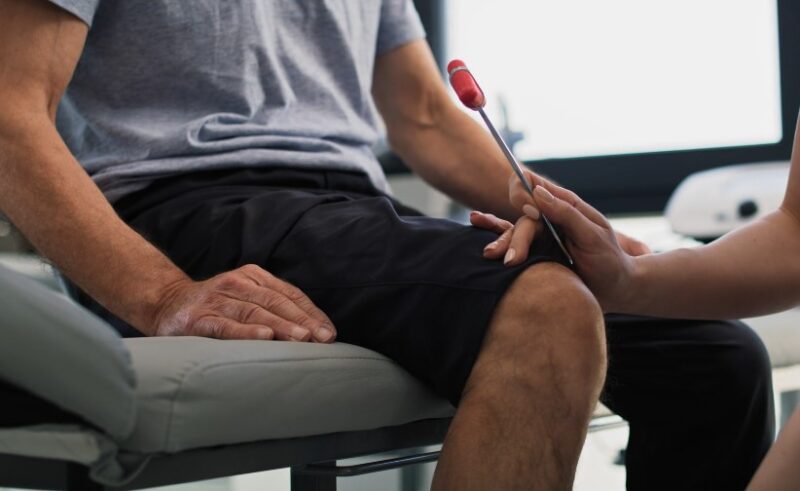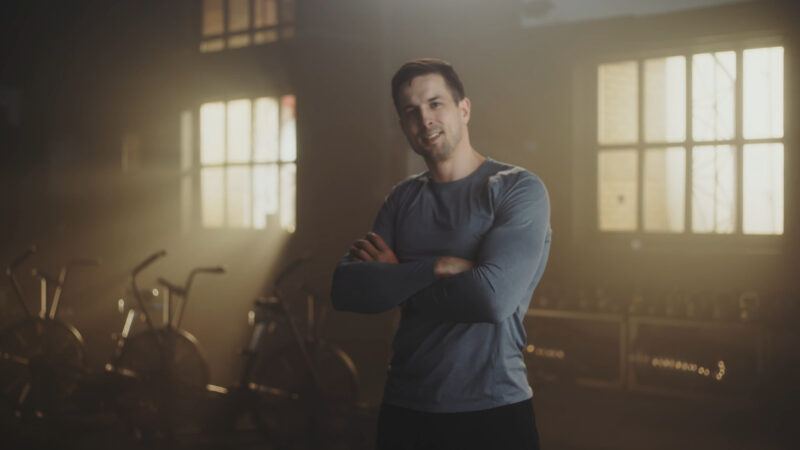The truth is, recovering from a sports injury isn’t just about showing up for physical therapy and checking off rehab exercises. It’s messy. It’s unpredictable. And more often than not, people miss crucial steps that affect how strong, stable, and mentally ready they are when they return.
The body doesn’t heal in a straight line. Neither does the mind. And the way most athletes approach recovery? It leaves blind spots, sometimes big ones.
Let’s take a closer look at where things go sideways in the healing process. If you’ve been through an injury or are helping someone who has, the following might explain why things feel stuck — or why problems keep showing up again after being “cleared.”
Table of Contents
ToggleWhat Gets Missed, And What to Do About It
| Missed Factor | Why It Matters | What To Do |
| Communication Between Providers | Prevents conflicting rehab instructions | Set up team check-ins and shared updates |
| Mental Readiness | Affects confidence and reinjury risk | Use goal setting, sports psychology, visualization |
| Rest vs. Exercise Imbalance | Delays healing or causes setbacks | Follow structured rehab, monitor pain |
| Ignoring Injury Root Causes | Leads to repeat injuries | Assess technique, imbalances, habits |
| Rushing the Return | High risk of relapse or long-term issues | Stick to medical timelines and protocols |
| Poor Lifestyle Habits | Slows tissue repair and mental recovery | Sleep more, eat better, limit stress |
| No Alternative Activity | Leads to deconditioning and disconnection | Cross-train or try new movement safely |
Coordination Is Key in Recovery

One of the biggest mistakes happens off the field: poor communication among the people involved in the athlete’s care. Medical doctors, physical therapists, coaches, trainers, psychologists – they’re often operating in silos.
You might assume everyone’s on the same page. They’re not.
A physical therapist might design a plan based on how an athlete feels during rehab. But if the surgeon’s post-op restrictions aren’t shared, the therapist could unknowingly push them too far.
The same thing happens the other way — strength coaches might build conditioning programs that re-stress the injury site because they haven’t been updated on recovery milestones.
How to fix it
- Schedule regular check-ins (virtual or in-person) with the whole care team.
- Make sure every provider knows the rehab milestones and current restrictions.
- Ask for written progress updates at key transition points in your recovery.
- Don’t assume everyone is communicating — be the one to make sure they are.
Mental Recovery Is Real, and Most People Skip It

When you’re sidelined from the sport you love, it messes with your head. You might feel anxious. Is the injury going to happen again? You might feel isolated. Your teammates are moving forward, and you’re stuck in rehab. Or worse — you feel like you’re losing your identity.
All of that affects how your body heals. And how confident you feel when it’s time to get back in the game.
Stat check: Athletes with weak social support after injury are far more likely to develop depression or chronic pain within 6–12 months. Those with stronger support systems recover faster, with less psychological distress.
What helps:
- Set SMART goals — Specific, Measurable, Attainable, Relevant, and Time-bound. Vague hopes (“I just want to be better soon”) tend to create frustration.
- Work with a sports psychologist — especially if you’re feeling stuck, anxious, or scared to return.
- Use visualization techniques — see yourself moving confidently and fluidly again.
- Practice self-talk — that inner critic isn’t helping. You’re rebuilding, not failing.
- Acknowledge what you’re feeling — pushing emotions down doesn’t make them disappear. If you’re also dealing with substance-use habits while injured, addiction recovery can provide dual-focused coaching.
The Rest-Exercise Balance Is Harder Than It Looks
People either rest too much or push too soon. Neither is great.
Complete rest beyond the early stages can cause deconditioning. Weak muscles. Slower circulation. More stiffness. But the other extreme — training too aggressively — sets up reinjury.
A better approach
- Use RICE in the early stages: Rest, Ice, Compression, Elevation.
- As swelling subsides, begin structured rehab under supervision.
- Monitor for signs of overload — heat, swelling, lingering soreness.
- Incorporate cross-training — swimming, cycling, water jogging — to maintain conditioning.
What Caused the Injury in the First Place?
People often skip the “why.” They treat the injury but not the root of it.
Was your squat form off? Were you overloading your calendar with back-to-back workouts and poor sleep? Maybe a weak core made your knee take more impact than it should’ve. If you skip that analysis, you’re likely to see the same issue — or another one nearby — come back around.
Stat check: Athletes who complete biomechanical assessments and adjust training variables during rehab are significantly less likely to reinjure themselves.
Look at everything:
- Training technique
- Muscle imbalances (like weak glutes or tight hamstrings)
- Recovery habits (sleep, hydration, nutrition)
- Equipment (shoes, insoles, surface type)
Time Pressure Is the Silent Killer of Recovery

It’s tempting to rush.
The pressure to return is heavy — from coaches, teammates, scholarships, even from within. But rushing back before full healing increases the odds of a bigger setback. The body may seem ready, but that doesn’t mean it’s prepared for chaotic movement or game-level intensity.
What works
- Follow the rehab timeline recommended by your physician or athletic trainer.
- Don’t jump steps, even when symptoms seem gone.
- Use return-to-play protocols that test movement, reaction time, and sport-specific demands.
- Be honest about what still hurts, what still feels “off.”
Healing Happens at Night, But Only If You Sleep

Nutrition, sleep, and daily habits matter more than most realize. Your tissues rebuild when you’re resting, not when you’re watching late-night game film or skipping meals.
The details matter:
- Sleep: Aim for 7–9 hours. Growth hormone peaks during deep sleep and drives tissue repair.
- Food: Protein supports muscle rebuilding. Omega-3s help reduce inflammation. Hydration improves blood flow and nutrient delivery.
- Social habits: Long walks on an injured foot? Dancing at a wedding with a healing knee? Doesn’t help. Also, isolation increases mental distress, which slows recovery.
Example: A marathoner recovering from shin splints improved healing speed by replacing processed carbs with complex ones, increasing protein intake, and going to bed an hour earlier.
Use the Off-Time to Try Something New
Just because you can’t do your usual sport doesn’t mean you can’t move. Athletes who find other ways to stay active often recover better, physically and mentally.
Cardio can be maintained with low-impact workouts. Mobility can improve with light yoga. Focus and body awareness can sharpen with mindful breathing or meditation. Even coaching younger players or watching game film can keep your brain in the game.
Example: A cyclist with a fractured wrist took up one-arm rowing on a cable machine. He also started meditating to manage anxiety. He came back with better cardiovascular health and more mental clarity than before the crash.
Your Environment Shapes Your Recovery More Than You Think
Where you spend most of your time during recovery can either help you heal or quietly set you back. It’s easy to overlook — especially when you’re focused on rehab exercises, timelines, or check-ins with your surgeon. But your surroundings matter.
If you’re stuck in a cluttered room, surrounded by reminders of everything you can’t do, it messes with your head. If your house isn’t set up for comfort — or worse, aggravates your injury (think stairs with no railings or couches too low to stand up from easily) — it quietly adds stress to your system.
Healing thrives in simplicity. Comfort. Encouragement.
Some small but high-impact tweaks:
- Keep essentials within reach — medications, water bottle, journal, compression gear.
- Adjust your space to reduce movement strain — pillows for support, nightstand by the couch, non-slip mats if you’re on crutches.
- Add visuals that remind you of progress — printed rehab plans, post-it goals, photos from before the injury to tap into motivation.
- Minimize noise and chaos — healing requires calm. That includes limiting social media if it’s triggering anxiety or comparison.
The takeaway? Set up your physical space to match the mindset you want to keep. Recovery isn’t just something that happens inside your body — it’s something you build, day by day, with what’s around you.
So if you’re feeling stuck, or like your motivation’s dipping, don’t just push harder at the gym. Look around. Sometimes the shift you need starts at home.
Final Thoughts
Recovery is never just about getting back on the field or in the gym. It’s about making sure you’re actually ready — physically, mentally, and emotionally — to do what you love again without risking a slide backward.
The athletes who come back stronger aren’t just lucky. They’re the ones who ask better questions. They take the rehab process seriously, but they also look beyond the obvious. They get support. They stay honest. And they treat healing like the full-body, full-mind process it really is.
If you’re injured right now, or helping someone who is, don’t rush the surface steps. Go deeper into the process, even if it feels slow. That’s where the real recovery happens.
Related Posts:
- How Can You Start a Career as a Running Coach?
- Lower Back Pain While Running? Here's What You Need to Know
- Top 400 Hilarious Gym Quotes to Keep You Motivated
- How Long Does It Take to Train for a Half Marathon?
- How To Recover From Muscle Inflammation Without Medication
- 10 Best Running Documentaries - Inspiring Films for Runners







